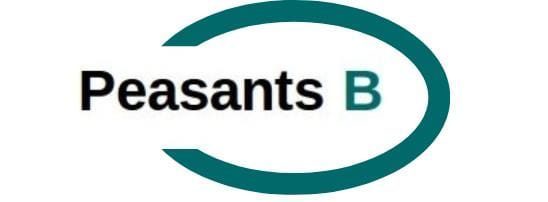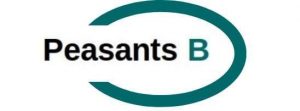Commodities are crucial to the economy and, in some cases, are viewed as a good hedge against inflation. Their return is based on supply and demand dynamics rather than profitability. Many investors invest indirectly in commodities by buying shares in companies that produce them. However, there is also a huge market for investing directly, whether that is actually buying a physical commodity with the view of eventually selling it for a profit or investing in futures. Simply put, an asset class is a grouping of comparable financial securities. There is usually very little correlation and sometimes a negative correlation among different asset classes.
Correlation changes over time
Investors in this asset class usually believe they have an edge and can unearth early stage or growth business that will make a lot of money. Expect to pay a manager 2% annual management fee and 20% performance fee if the investments do well. Think about returns and what assets offer you peace of mind and flexibility. The FSCS protection that exists with investments, covers financial advice and investment firms but not shares. You can withdraw it whenever you want if it isn’t locked away in a fixed term interest generating account.
Purpose-Driven Savings
The quick ratio, sometimes called the acid-test ratio, is identical to the current ratio, except the ratio excludes inventory. Inventory is removed because it is the most difficult to convert to cash when compared to the other current assets like cash, short-term investments, and accounts receivable. A ratio value of greater than one is typically considered good from a liquidity standpoint, but this is industry dependent. Other investment assets that take longer to convert to cash might include preferred or restricted shares, which usually have covenants dictating how and when they can be sold. In addition, specific types of investments may not have robust markets or a large group of interested investors to acquire the investment. Consider private shares of stock that cannot easily be exchanged by logging into your online brokerage account.
The most liquid markets, such as blue-chip U.S. stocks, tend to be the largest. Because liquid assets can be bought and sold quickly and don’t carry high spreads or transaction costs. Additionally, liquidity means that large numbers of transactions can occur without causing excessive fluctuations in the price of the underlying assets. Cash is the most liquid asset, and companies may also hold very short-term investments that are considered cash equivalents that are also extremely liquid. Companies often have other short-term receivables that may convert to cash quickly.
Charles Payne: Proclaiming American exceptionalism dead is a colossal mistake
That said, securities are considered less liquid than actual cash as sometimes it takes three to five days for a trade to settle and for the cash proceeds to hit your account. Securities markets can be volatile and you may not be able to sell at the price you want, when you want. Cash and cash equivalents represent actual cash on hand and securities that are similar to cash. This type of investment is considered very low risk since there is little to no chance of losing your money.
Algorithmic trading, a significant innovation in modern financial markets, has transformed market dynamics by leveraging computer algorithms to automate trading strategies. This technological advancement has brought both advantages and challenges to the financial landscape. By enhancing trade execution speed and accuracy, algorithmic trading can improve market efficiency and reduce costs. However, it also introduces complexities such as potential market manipulation and increased volatility that necessitate careful monitoring and regulation. For financial markets, liquidity represents how easily an asset can be traded. Brokers often aim to have high liquidity as this allows their clients to buy or sell underlying securities without having to worry about whether that security is available for sale.
By accumulating funds over time, individuals and organizations can avoid the financial strain of large, lump-sum payments. Saxo Bank A/S and its entities within the Saxo Bank Group provide execution-only services, with all trades and investments based on self-directed decisions. Analysis, research, and educational content is for informational purposes only and should not be considered advice nor a recommendation.
- The bondholder loans their money to the issuer and gets back periodic interest payments and repayment of principal at maturity.
- The liquidity of markets for other assets, such as derivatives, contracts, currencies, or commodities, often depends on their size and how many open exchanges exist for them to be traded on.
- By saving in small, regular amounts, individuals and businesses ensure they have the necessary funds when needed.
Another reason to be mindful about what asset classes you invest in is the need for portfolio diversification. In general, the more liquid an asset is, the less its value will increase over time. Completely liquid assets, like cash, may even fall victim to inflation, the gradual decrease in what financial liquidity is asset classes pros and cons examples purchasing power over time. Liquidity is important because owning liquid assets allows you to pay for basic living expenses and handle emergencies when they arise.
Examples of liquid assets
Gordon Scott has been an active investor and technical analyst or 20+ years. It’s easy to go on autopilot and commit your hard earned money to something that might be more pain than it is worth over time. However, this is a highly established industry and a lot of money is made here.
The primary reason most individual investors look to direct indexing is for improved tax efficiency through targeted tax-loss harvesting. This strategy focuses on maximising long-term returns and suits investors who can tolerate higher levels of risk. This portfolio prioritises stability and income protection, making it ideal for risk-averse investors or those nearing retirement. Instead, they will have to sell the collection and use the cash to purchase the refrigerator. Let’s calculate these ratios with the fictional company Escape Klaws, which sells those delightfully frustrating machines that grab stuffed animals. A low DSO indicates that you’re collecting money on a relatively rapid basis, giving you better cash flow.
The term ‘investment asset classes’ may sound foreign to the uninitiated, but it simply refers to a group of investment options that share some traits. This could be in terms of how they are structured, or how they behave in the marketplace. But assets like real estate, as well as art and jewelry, may be considered highly or even exclusively illiquid. This doesn’t mean that you will never receive cash for them, only that it can be more challenging to value assets like this and then turn them into cash. For businesses who want to know how to improve liquidity, Ramp offers a suite of financial tools and services designed to streamline expense management and optimize cash flow. On the other hand, less liquid stocks, such as those of small, lesser-known companies, may have lower trading volumes and wider bid-ask spreads.
- Real estate is often considered an illiquid asset class due to the time and costs involved in buying and selling properties.
- Equity represents the amount of money that would be returned to a company’s shareholders if all its assets were liquidated and all of the company’s debt is paid off.
- All investments involve the risk of loss and the past performance of a security or a financial product does not guarantee future results or returns.
As each group attempts to buy and sell things, it’s crucial to understand what financial liquidity is, how to measure it, and why it is important. When managed properly, sinking funds can be a valuable tool for financial stability and long-term security. But to understand their utility, it is important to understand their working as well. A retirement sinking fund is designed to accumulate savings over an individual’s working life to support post-retirement expenses. Regular deposits into this fund, often matched by employers, ensure a stable income during retirement without financial stress. Created to manage the repayment of callable bonds, this fund allows companies to set aside money periodically to redeem these bonds before their maturity date.
Alternative Investments
A sinking fund is a smart way to set aside money for future expenses, whether it’s paying off debt, replacing assets, or handling big financial obligations. By saving in small, regular amounts, individuals and businesses ensure they have the necessary funds when needed. Maturity mismatches can also occur when a hedging instrument and the underlying asset’s maturities are misaligned. At the end of the forecast period, Year 4, our company’s ratio remains relatively unchanged at 0.5x, which is problematic, as concerns regarding short-term liquidity remain. The quick ratio is therefore considered more conservative than the current ratio, since its calculation intentionally ignores more illiquid items like inventory. Illiquid assets are excluded from the calculation of the quick ratio, as mentioned earlier.
Compared to public stock that can often be sold in an instant, these types of assets simply take longer and are illiquid. Before investing in any asset, it’s important to keep in mind the asset’s liquidity levels since it could be difficult or take time to convert back into cash. Of course, other than selling an asset, cash can be obtained by borrowing against an asset. For example, banks lend money to companies, taking the companies’ assets as collateral to protect the bank from default. Funds in a sinking fund can be invested in low-risk securities or interest-bearing accounts. This investment potential allows the fund to grow over time, increasing the available amount when obligations arise.

